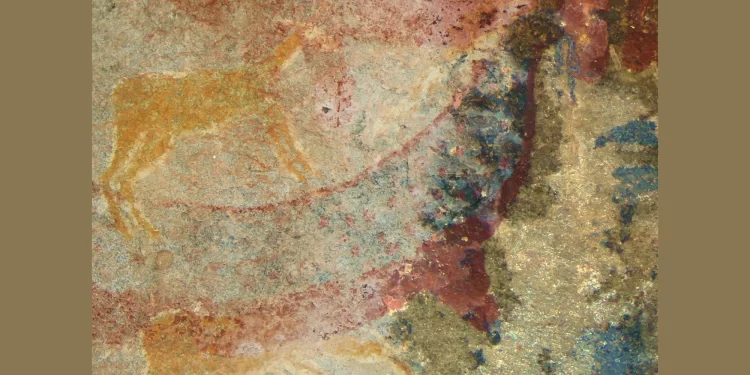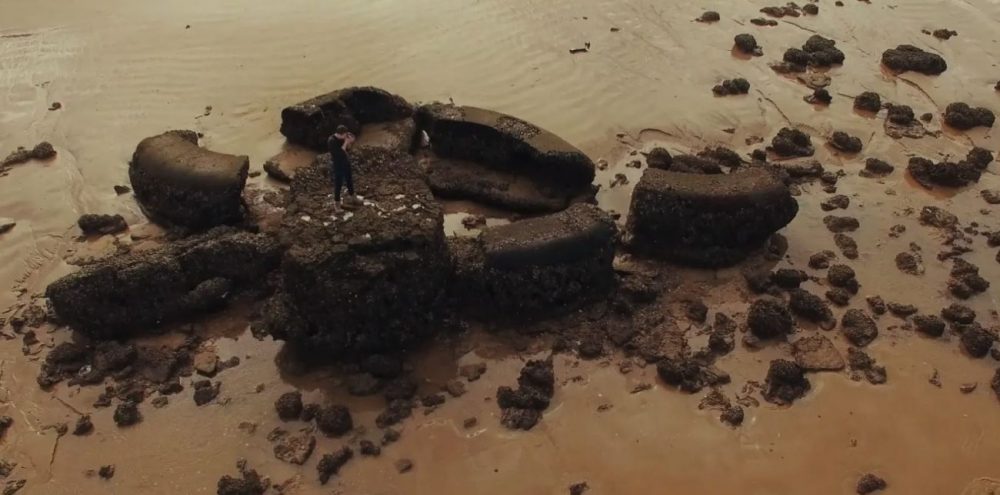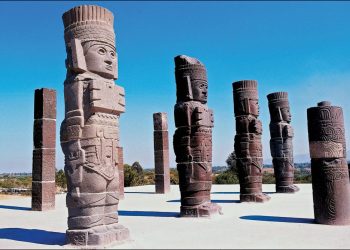High up in the isolated Koesberg Mountains of South Africa, a mysterious cave painting has captured the attention of researchers. The artwork, created by the /Xam-speaking San people sometime between 1821 and 1835, portrays a creature with distinctive downturned tusks. Scientists are now speculating that this figure, known as the “Horned Serpent,” could represent a long-extinct species from the region’s prehistoric past. At first glance, the creature might be mistaken for something as out of place as a walrus, but the vast, arid desert of the Karoo is hardly the place one would expect to find an Arctic mammal. Instead, a new study published in PLOS One offers a more intriguing explanation. The painting could be a representation of a dicynodont, a prehistoric animal that lived in this area some 200 million years ago, long before humans walked the Earth.
The Dicynodont Hypothesis
Dicynodonts were ancient herbivorous creatures, part of the therapsid group, notable for their mix of reptilian and mammalian features. These animals were equipped with two tusks, which aligns with the “Horned Serpent’s” distinctive appearance. According to Dr. Julien Benoit, lead author of the study, fossils of these creatures are common in the Karoo, and it’s likely that the San people encountered these remnants of the distant past.
Western science didn’t officially recognize dicynodonts until 1845, well after the painting had been created. Benoit suggests that the San may have integrated these fossil discoveries into their cultural lore, creating artistic depictions of creatures based on fossil evidence. “This discovery is significant for both science and cultural history,” says Benoit. “It suggests that the San people understood fossils long before they were categorized by Western scientists.”
Art Rooted in Reality

Unlike some ancient cultures that created purely imaginative or mythical creatures, the San were known for their attention to real-world details in their art. Their cave paintings, often depicting animals, are believed to represent elements of the natural world with accuracy. Benoit points out that while the “Horned Serpent” might seem fantastical at first glance, it likely draws from actual fossilized remains that the San discovered in the Karoo. This idea aligns with San mythology, which often references large, ancient beasts roaming the land. It is possible that the sight of dicynodont fossils fueled these stories, blending ancient paleontological knowledge with cultural beliefs.
The Significance of the /Xam People
The /Xam-speaking San people, who inhabited the Karoo region at the time the painting was made, have since become extinct, taking with them much of their cultural and historical knowledge. Unlike their modern descendants, the !Kung people of the Kalahari Desert, the /Xam left behind no written records, making the study of their art and beliefs particularly challenging for researchers today.
“The disappearance of the /Xam culture means we have lost a significant body of knowledge,” says Benoit. “We can only piece together fragments from their art and the fossils they left behind.”
The painting of the “Horned Serpent” is now seen as a window into this lost world, offering a glimpse of how the San people may have interacted with their environment—both the living and the fossilized remnants of creatures long gone.
Similar Discoveries Across Africa
This isn’t the only case of ancient peoples depicting prehistoric life. In Mokhali Cave, located in present-day Lesotho, researchers have found paintings of what appear to be dinosaurs, drawn around the year 1810. These artworks, believed to be made by the San, show large creatures alongside preserved footprints. The artists even depicted these creatures without handprints or tail drag marks, eerily similar to modern birds, which suggests they had observed fossilized dinosaur tracks.
These examples highlight how indigenous cultures may have developed an understanding of paleontology far earlier than previously believed. The field of indigenous paleontology in Africa is still relatively underexplored, but researchers hope that continued study of ancient art and fossils will yield more insights. As Benoit notes, “There is so much we still don’t know about how ancient peoples understood their world. The destruction of many indigenous cultures has left gaps in our understanding, but we hope that with further research, we can recover some of that lost knowledge.”











